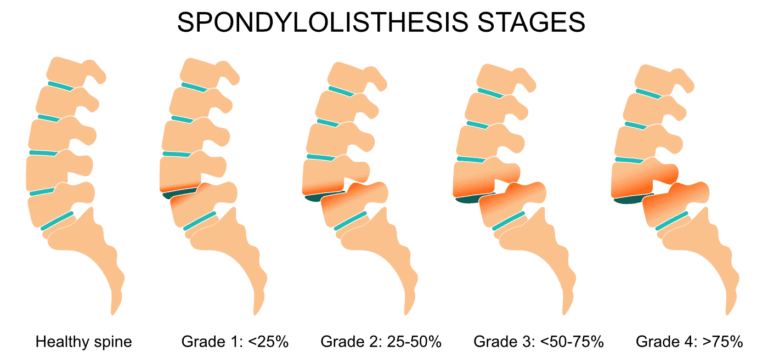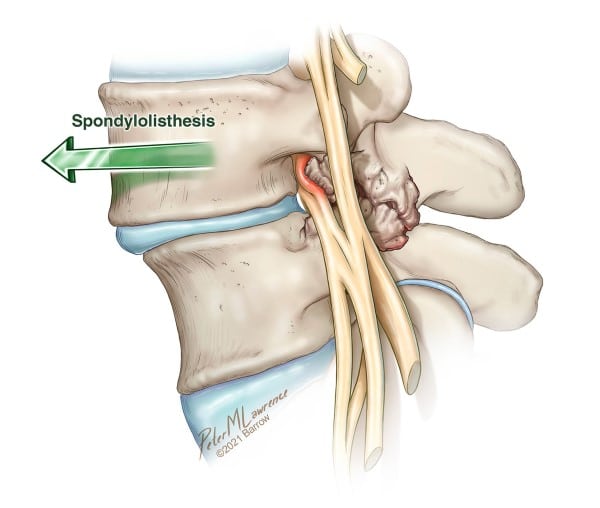Spondylolisthesis
What is it?
A Spondylolisthesis is a term use to describe a forward slippage of one vertebra on another. There are six different types, with each type relating to the cause.
Types
1. Dysplastic – Congenital and results from alteration in the formation of the facet joints in the spine
2. Isthmic – Caused by a defect of the pars interarticularis and affects young athletes predominately
3. Degenerative – From a combination of Disc and facet joint degeneration resulting in forward slipping of the vertebra
4. Traumatic
5. Pathological – Infection, malignancies/cancer
6. Iatrogenic – As a result of spinal decompression surgery such as a laminectomy
Grading
A Spondylolisthesis is graded using the Meyerding classification. This is done through imaging modalities such as X-ray, CT or MRI.
These grades are:
- Grade 1 – Less than 25% slippage
- Grade 2 – 26 – 50% slippage
- Grade 3 – 51 – 75% slippage
- Grade 4 – 76 – 100% slippage

Management
Management is largely dependent on the grading. Grades 1,2 are generally successfully managed conservatively, while grades 3 (when conservative management has failed, and symptoms are worsening) and grade 4 need surgical intervention.
Treatment options
- Manual therapy – To address spasm of surrounding musculature as a result of the slip
- Exercise – Exercise program to assist in restoration of pain free motion and increase strength and stability of lower back and core musculature.
- Bracing – For younger individuals with acute onset, bracing may be used to allow the spine time to heal.
- Relative rest/activity modification – A short bout of relative rest and avoiding aggravating activities can be beneficial in reducing pain.
- Referral – We can keep a close eye on your recovery and refer out when further investigation or expertise is needed.
Chiropractors are trained in the conservative management of spondylolisthesis, and are able to guide you through appropriate treatment and rehabilitation exercises or refer you onto other health professionals if indicated.
Co-authored by Dylan Long & Grant Lehmann

